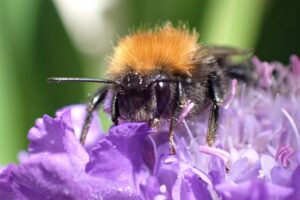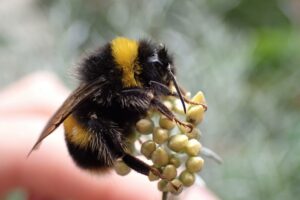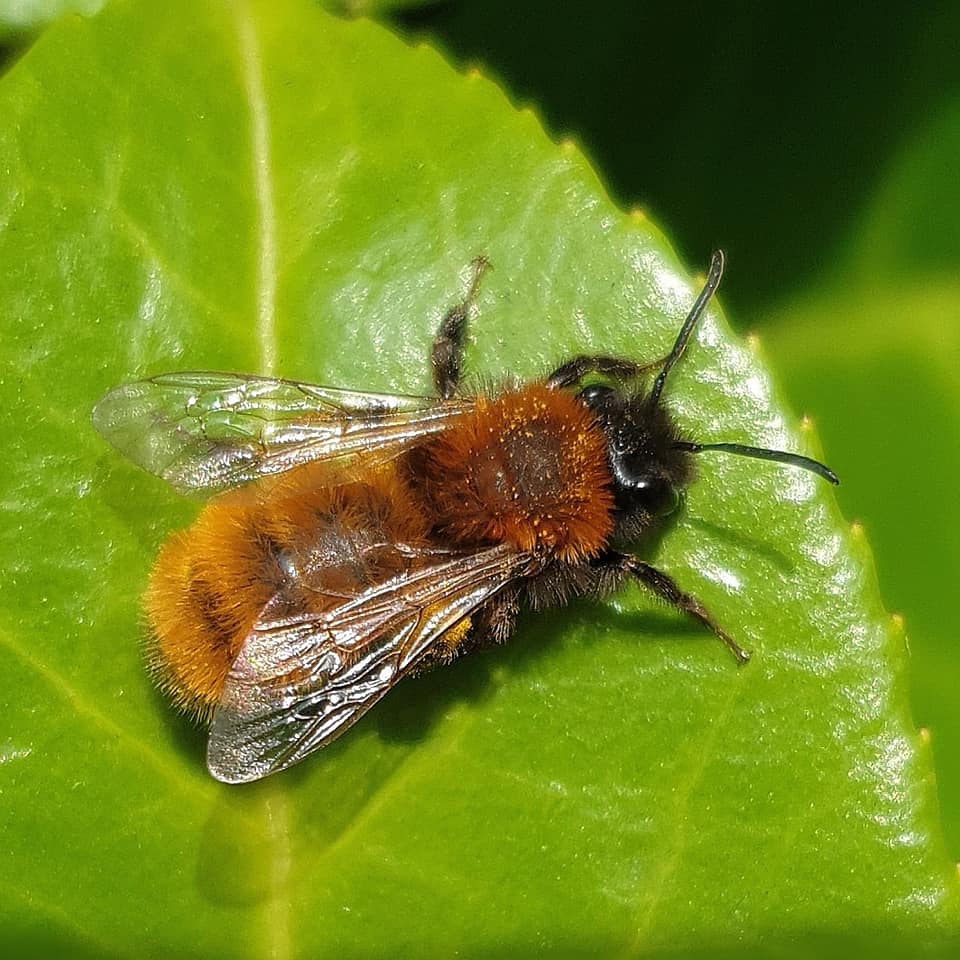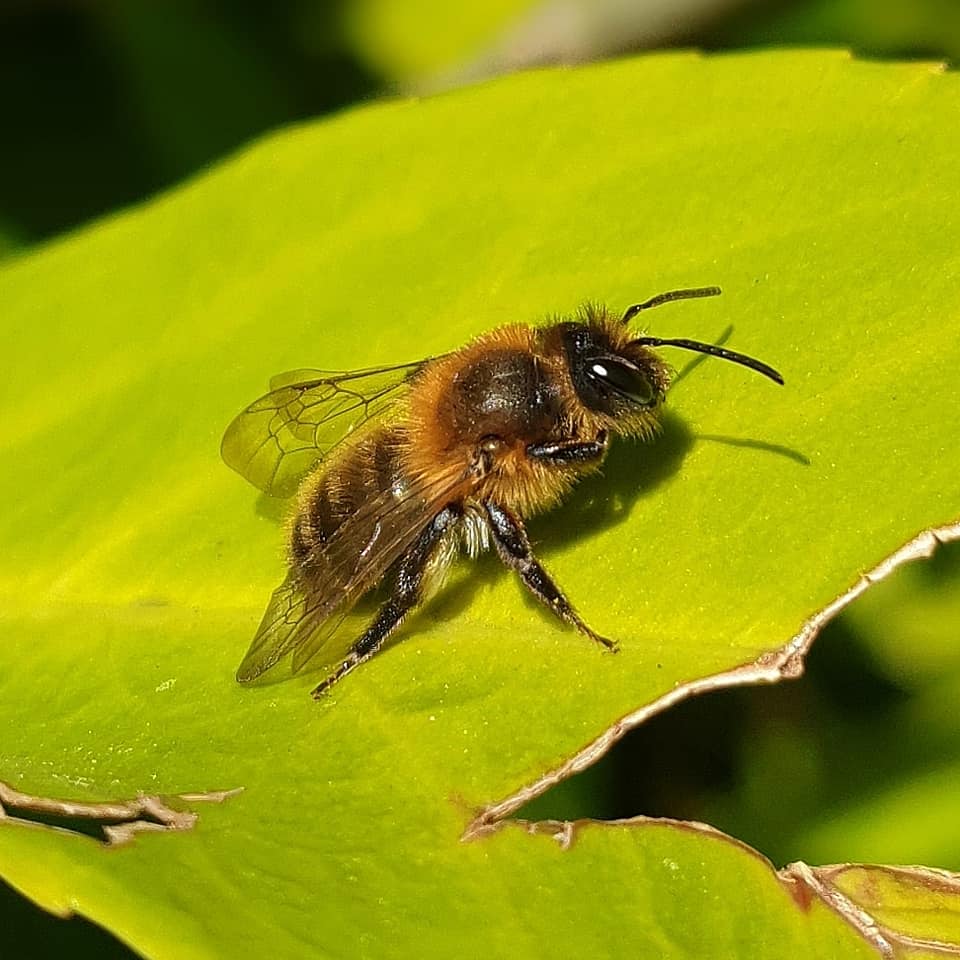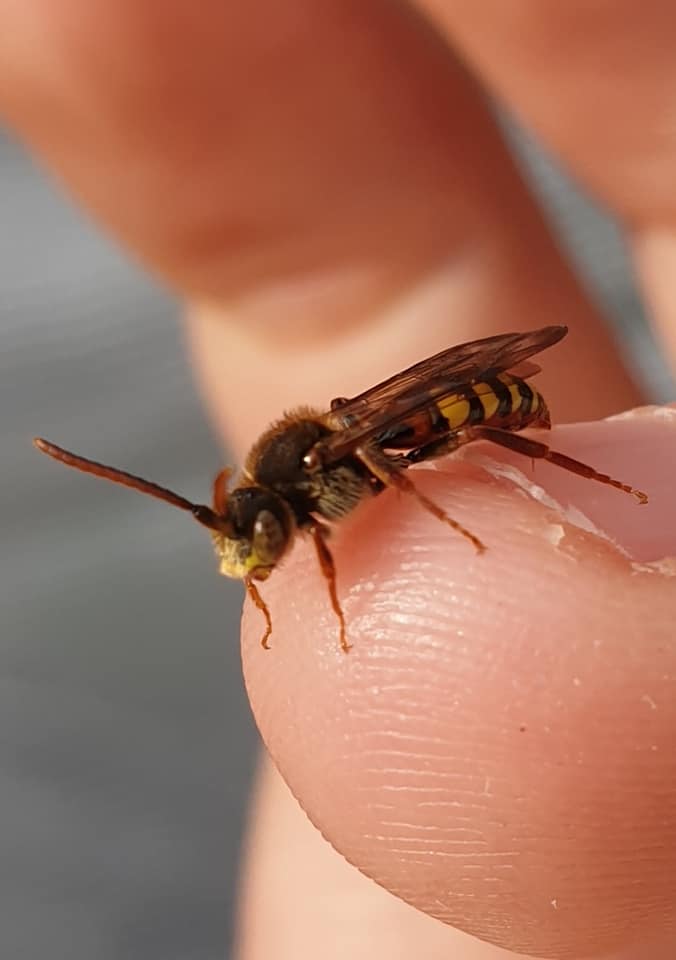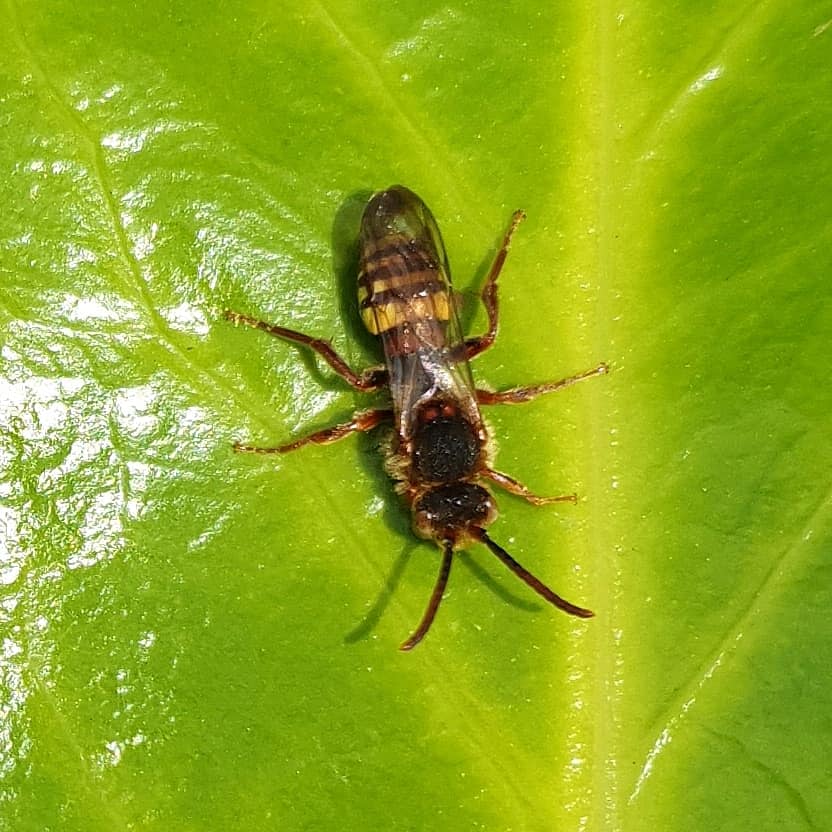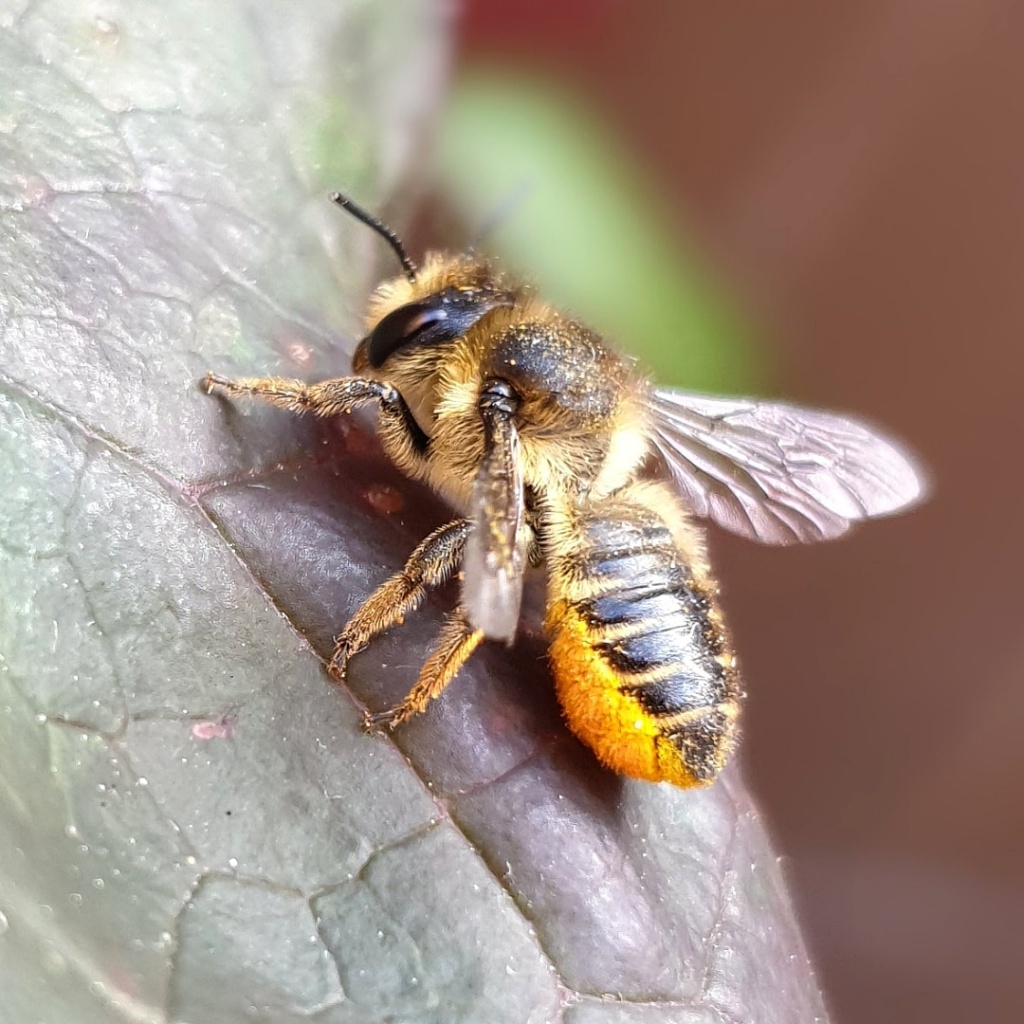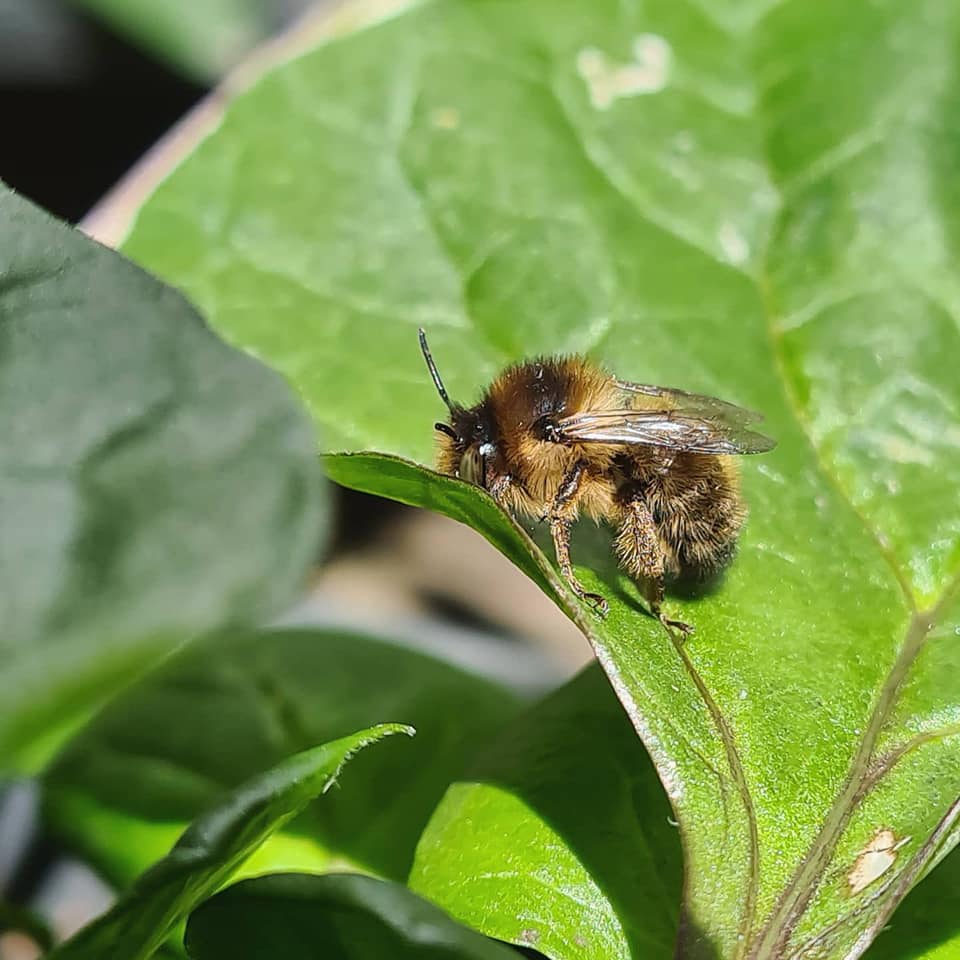James Common, local naturalist and NHSN Comms and Engagement Officer, explores the diversity of bees found one Newcastle street.
For me, one of the few positive aspects of the recent lockdown was the opportunity to look closer at the wildlife that persists close to home. Doing so has been eye-opening, and while I would rather have ventured into the wider countryside, the diversity of life here has both surprised and delighted.
One of the most obvious species groups on our street in Heaton during lockdown has been the bees: big ones, small ones and some, smaller still. Spurred on by the North East Bee Hunt, we have been paying an increasing amount of attention to these vitally important invertebrates over recent weeks – with great results. As of writing this, we have now recorded 16 species of bee on our street, a great surprise taking into account our urban location!
Where better to start than with bumblebees? The first queens appeared here in March providing a good opportunity to appreciate the emerging ladies in all their fluffy glory; while now, males are on the wing. Of these, Buff-tailed Bumblebee, Tree Bumblebee, and Common Carder Bee have been the most conspicuous, congregating en masse in the weed-filled yards that dominate on our street. More interesting still were sightings of Small Garden Bumblebee and Early Bumblebee and later, White-tailed Bumblebee – I do not see too many of these here.
Topping off our haul of the North East’s larger, more trendy bees, on a few occasions in April we caught sight of striking cuckoo bumblebee patrolling the hedge that fringes the nearby railway line. Sporting an eye-catching combination of a black body and white abdomen (okay, bum) this was either a Southern Cuckoo Bumblebee or Gypsy Cuckoo Bumblebee. Frustratingly, the pair are almost indistinguishable, and I think I will have to make do with a question mark next to this record.
Until recently, we had paid little attention to solitary bees, believing them small, difficult to identify, and perhaps, a little less interesting than our colourful bumblebees. Oh, how wrong we were – these little engineers are fascinating to watch and just as vivid as their larger, more rotund cousins.
One of the most abundant solitary bees observed here over recent months has been the fox-coloured Tawny Mining Bee. A colony of which appears to be flourishing on the outskirts of the local allotments, with the larger, ginger females, in spring, favouring a patch of Cherry Laurel to bask each day as the sun warmed up. One of our most recognisable solitary bees, this species is known to favour gardens, parks, and other artificial habitats thus its little wonder we have found them here. By the end of May, the Tawny Mining Bees had vanished but we will look forward to their emergence next year.
Slightly less easy to identify, the former species appears to be sharing it’s a particular stretch of hedgerow with another species: the Chocolate Mining Bee. A new species for me, this large bee has a distinct Honeybee vibe about it but boasts characteristic white hairs on the underside of its hind legs.
At first glance, this bee looks incredibly similar to another species, the Buffish Mining Bee, although under scrutiny the latter species displays an orange-coloured pollen brush on its back lets. Buffish Mining Bees appear somewhat scarcer here and annoyingly, the candidate I located was covered in pollen, making recognition of those orange pollen brushes impossible.
Familiar from bee boxes and wall cavities across the nation, the Red Mason Bee is another species we noticed a lot during May. Boasting a beautiful mix of flame-orange and black, these bees quickly became a regular fixture of our daily walks with the larger, some may say more appealing, females gathering in good numbers on the muddy shores of our local pond. Here they gathered the all-important mud used for lining their nest cells as shown in the video below – what a treat.
Also worthy of a mention here are the are colourful but confusing Nomada cuckoo bees apparent from late April into May. Like the Cuckoo Bumblebees, these wasp-like bees are nest parasites – they lay their eggs in the nests of solitary bees, with most species of Nomad Bee favouring a particular species.
These blighters are notoriously hard to identify; particularly the tri-coloured individuals shown in the photos below. They could be Panzer’s Nomad Bee but alas, this is another instance where I may well have to settle for appreciating the bee absent delving into identification. We did, however, with some expert help from Charlotte Rankin managed to identify a single Gooden’s Nomad Bee – a known parasite of Buffish Mining Bee.
Fast forward to early summer and bee community of our city street has changed again. The solitary bees are spent and, while the bumblebees continue to dance between the gardens, they have been upstaged by two new characters. Patchwork Leafcutter Bees with their vibrant and distinct orange ‘stomach’ and the yellow-faced and lovely, Fork-tailed Flower Bee. Both of these under-recorded bees could well turn up in your garden too.
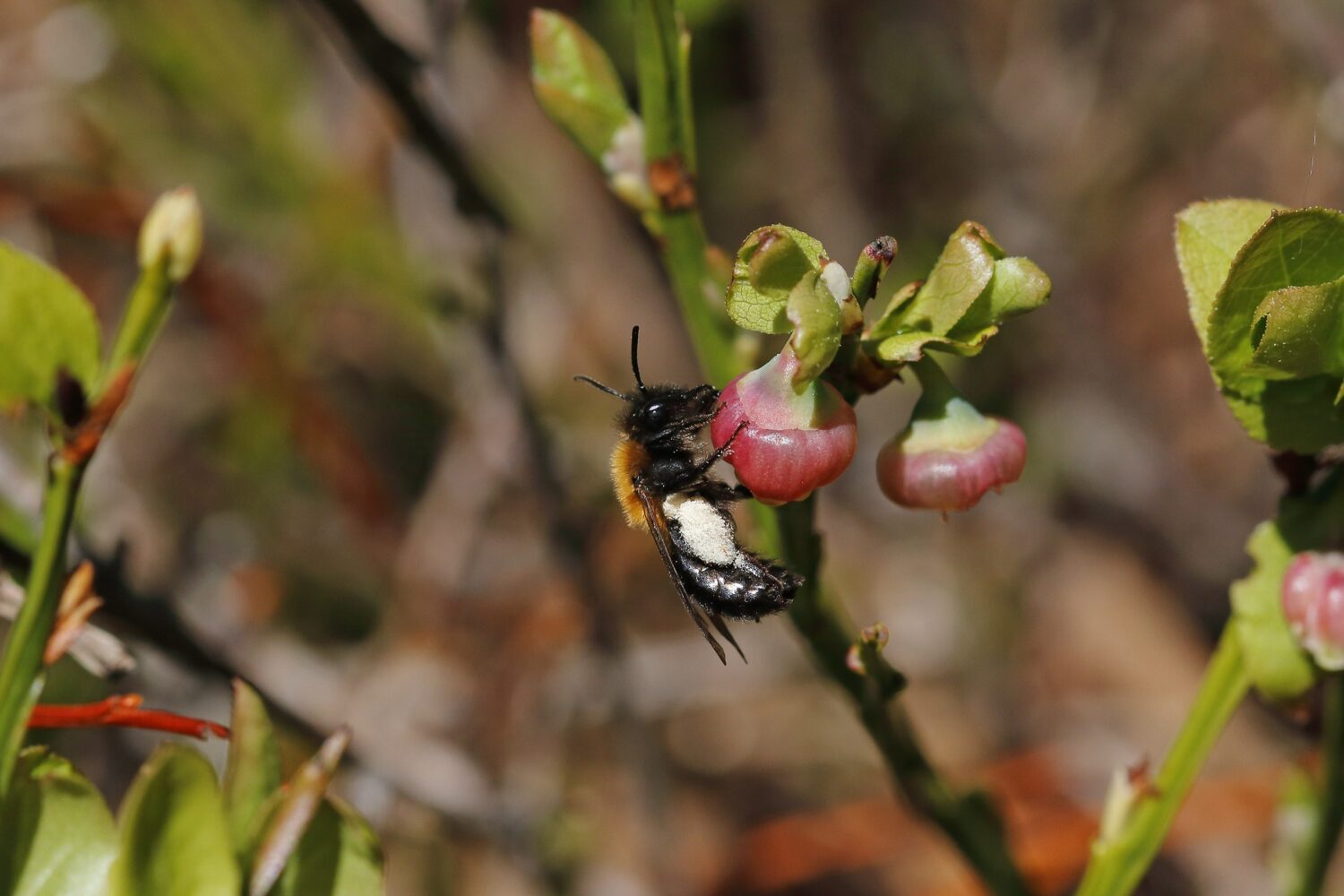
Join the North East Bee Hunt
Urban or rural, beginner or expert, we need your help to record eight distinctive bees across the North East this spring and summer.
Your records can add to our understanding of bees in the region and inform conservation and monitoring efforts.
Taking part is easy and every record counts, wherever you live in the region. Records of all bee species are encouraged.
